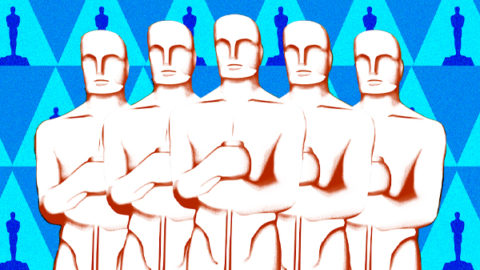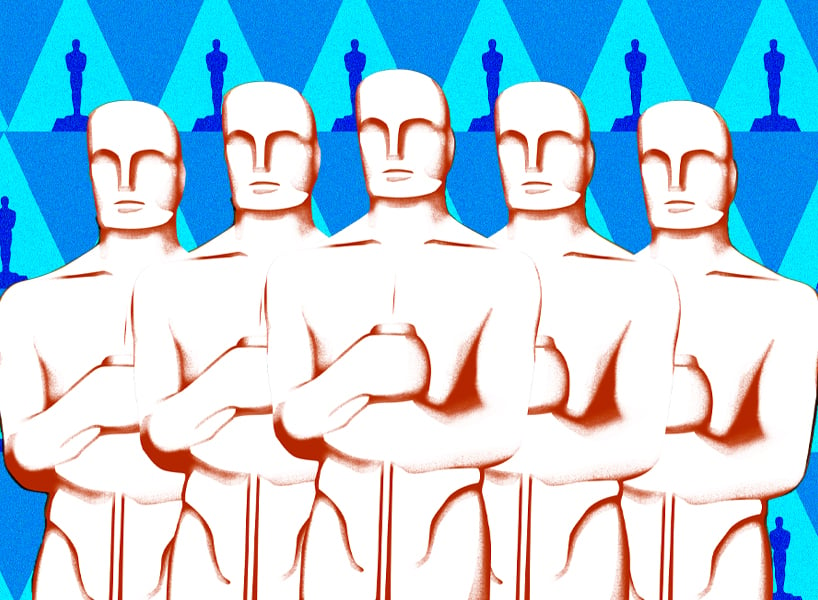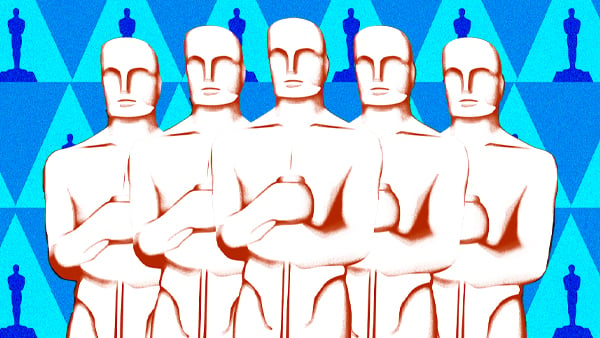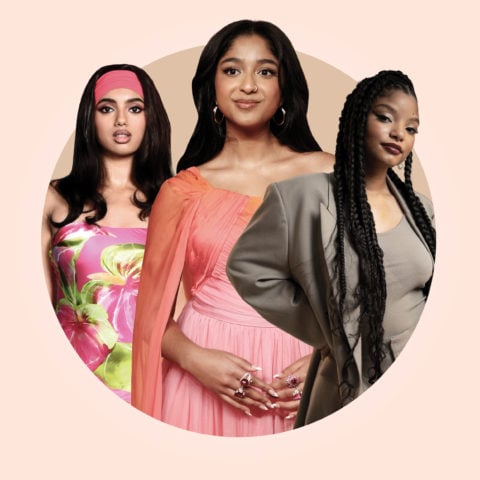Why Are Awards Shows Still So Damn White and Male?
Steps have been taken, but it doesn’t feel like we’ve gotten very far


It feels like we’re asking the same question every year. Nominations are announced and all the major categories are dominated by white actors and male directors, despite widespread calls for change.
It’s gotten so glaringly bad, that even celebrities who typically never take a stand on these issues are speaking out.
“We find ourselves talking again about the need to do more to ensure diversity in the sector and the awards process,” Prince William, BAFTA president, said at this year’s ceremony. “That simply cannot be right in this day and age.”
He’s not the only one. This award season has seen celebrities from Issa Rae and Joaquin Phoenix use the stage as a way to call out the persistent lack of inclusion in Hollywood’s biggest nights.
Yet, when #OscarsSoWhite creator April Reign saw the 2020 Academy Awards nominations—with only one person of colour nominated for acting and no nods for women directors—she says she was “disappointed but not surprised.”
Despite commercial success and critical acclaim, films like The Farewell, Queen and Slim and Hustlers were largely shut out of awards season all together, while white male stories, such as 1917, Joker, The Irishman and Once Upon a Time in Hollywood, dominated. The BAFTAs’ roster of acting nominees was comprised of 18 white actors, and the nominees in the directing category were all male. The Farewell’s Awkwafina made history at the Golden Globes as the first woman of Asian descent to take home an award for best actor in a comedy or musical, but overall most of the winners selected by the Hollywood Foreign Press were white. Similarly, Parasite’s groundbreaking win at the SAG Awards, becoming the first foreign-language film to take home the night’s top prize, was described as a “notable exception.”
“The fact that we’re still talking about firsts means there’s still a lot of work that needs to be done,” says Reign.
To be fair, steps have been taken advocacy groups, filmmakers and festivals in recent years to improve inclusivity, but looking at the 2020 awards season it’s hard not to wonder if they’ve had any effect at all. Whatever happened to all that buzz around inclusion riders? What are film festivals doing to open the doors to more filmmakers? And WTF is up with awards-show voter demographics?
We asked some experts what’s going on behind the scenes, and it turns out that, even though awards season is still so white, Hollywood is making *some* legit strides. Here’s how.
Inclusion riders
What are they?
Two years ago, Frances McDormand won the Oscar for Best Actress and used her time at the mic to introduce viewers to two words: inclusion rider.
Created by Stacy L. Smith, who’s director of the Annenberg Inclusion Initiative, Pearl Street Films’ Fanshen Cox DiGiovanni and civil rights and employment attorney Kalpana Kotagal, an inclusion rider is a legal tool that stipulates that films must include candidates from under-represented communities in the auditioning and the interviewing process for cast and crew. It can also be adapted for use to enhance inclusion in other industries.
Where are we now?
https://www.instagram.com/p/BgCi2dEBKzd/?hl=en&taken-by=michaelbjordan
Following McDormand’s speech, Michael B. Jordan pledged to adopt the inclusion rider for all projects out of his production company, Outlier Society. As a result, Just Mercy, which recently hit theatres, became the first production to implement an inclusion rider. With MBJ’s encouragement, Warner Brothers, the studio behind Just Mercy, followed suit, becoming the first major studio to so. The independent film Hala, which was recently bought by Apple TV+, also implemented the policy, and as a result, Deadline reported, the production hired women for numerous leadership positions and for 75% of the critical below-the-line roles.
However, Kotagal says the inclusion rider’s impact goes beyond what we are seeing in the headlines. “It’s important to keep in mind that the inclusion rider is a contractual tool, and by virtue of that, it may not be the kind of thing that you see everywhere all the time,” says Kotagal. “That doesn’t change the fact that it is being implemented.” Since 2018, the lawyer says, she has worked on several inclusion riders for films, though she couldn’t give specific numbers due to confidentiality.
Simultaneouly, creators from under-represented communities are making themselves more visible, combatting that lame and well-worn excuse that project executives want to be diverse but simply can’t find the candidates. Dozens of databases—such as the Topple List, a living Google spreadsheet of professionals from marginalized communities created in 2019 by Transparent’s Jill Soloway; the T List, which highlights trans individuals in the entertainment industry; and Free the Work, a database of under-represented creators—exist to help make it easy for execs to find talent from under-represented communities.
Kotagal says the strength of the inclusion rider is that it helped people see that productions do not have to choose between quality and diversity—a mentality that, as Stephen King’s Oscar tweet proved, still persists. (The famed author, who is member of the Academy of Motion Picture Arts and Sciences and therefore able to vote for certain categories, revised his statement in a Washington Post essay acknowledging that the awards are “rigged in favour of the white folks” and that his tweet only applies in an ideal world).
Kotagal notes, however, that inclusion riders alone won’t revolutionize the industry. “Hollywood is a multifaceted problem in need of multifaceted solutions, and the inclusion rider can and should play a role, but it’s not the silver bullet,” she says.
The 4% Challenge
What is it?
“Because only 4% of the top 100 studio films over the last decade have been directed by women, Time’s Up is initiating a challenge, the 4% challenge, and I intend to take it: I commit to working with a female director in the next 18 months,” said Tessa Thompson at the Sundance Film Festival last year. A-list celebs like Brie Larson, Kerry Washington, Amber Tamblyn, Reese Witherspoon, Olivia Wilde, Jurnee Smollett and Armie Hammer—who noted that at the time that he had only ever worked with one woman director in his 14 years in the industry—all agreed to do the same.
Universal Pictures and MGM were the first studios to accept this challenge. Disney’s chairman and CEO Robert Iger stated last year that 40% of their upcoming movies, including Mulan and Frozen II, were directed by women, and that the studio was striving for even more.
Many have contacted us about accepting the 4% challenge, but I’m proud to say 40% of @DisneyStudios’ upcoming movie slate is being directed by women and we are striving for more!
— Robert Iger (@RobertIger) January 31, 2019
Where are we now?
Despite the multiple awards shows that only acknowledged males in their directing categories, 2019 *actually* saw some major gains for female directors in other ways. According to Annenberg Inclusion Initiative’s data collected on 1,300 of the top films from the past 13 years, 2019 had the highest percentage (10.6%) of women directors. It’s a move in the right direction, but, for context, the ratio of male to female directors during that whole time period was 20 to 1 and the ratio of white men to under-represented women directors was 92 to 1. In the top 500 films of 2019, the percentage of women working as directors, writers, producers, executive producers, editors and cinematographers has held at 23% for the past two years, which is a slight increase from previous years, according to the Center for the Study of Women in Television & Film.
50/50×2020
What is it?
Festivals are where a lot of the awards season momentum and buzz begin—but these industry events add another layer of inclusion issues.
In 2018, 82 women climbed the Palais stairs at the Cannes Film Festival—representing the dismal number of women-made films that had been selected in the festival’s 71-year history—and demanded change. Two days later, Cannes committed to the 5050×2020 pledge, which meant that the festival would increase gender representation as well as transparency surrounding the gender makeup of selection committees, executives, boards and films selected for the festival. Since then, dozens of festivals all over the world, including TIFF and the Venice Film Festival, have also signed the pledge and made changes.
Where are we now?
Despite its name, 5050×2020 doesn’t actually stipulate that festivals should reach gender parity this year, or how that concept applies to increasing the inclusion of people of colour, LGBTQIA and people with disabilities. At Cannes last year, the selection committee was 50% women for the first time in history, and a record number of the 19 films selected for Cannes’s main competition were directed by women—which sounds exciting until you find out that the “record number” was four, up from the previous year’s three. More than a third (36%) of TIFF’s 2019 lineup featured female directors, a small increase from previous years. Yet at Venice last year, out of the 21 films selected for the festival, only two were directed by women.
So, once again, there’s still a long way to go—but there are a few festivals that are *actually* making strides. Berlin film festivals got close to gender parity last year, with 41% of films directed by women, and Toronto’s Hot Docs managed to get the full 50%.
Sundance kicked off 2020 on a hopeful note with 44% of the selected films directed by women, which is a 4% increase from last year’s lineup, and 40% were directed by people of colour—both record highs for the festival. During Sundance, the Annenberg Inclusion Initiative presented new research that looked at the top film festivals from 2017–2019, that found that female directors—particularly women of colour—participate significantly less often at film festivals than their white male peers.
“Despite the progress that is underway, the fact is that the voices and talent of women and people of colour remain marginalized,” said Stacy L. Smith, founder of the USC Annenberg Inclusion Initiative in a press statement. “The data in this report makes it clear that the next generation of women of colour filmmakers are not being launched into the industry at the same rate as their white male peers.”
The researchers noted that one of their most significant finding was that when festivals have more women of colour working as programmers, they are more likely to showcase movies by underrepresented female directors—highlighting that it is crucial to hire more women of colour in these roles.
ReFrame Stamp
What is it?
Consider this a new badge of honour in the industry. In addition to its industry partnerships, training tools and research to further gender parity in the media, ReFrame—a non-profit founded by Women in Film & Television (WIFT) L.A. and the Sundance Institute—created the ReFrame Stamp, which highlights female-driven content. The project awards points for TV shows and films that hire women in areas like writing, speaking parts and department heads. (A minimum of four out of a total of eight possible points is required to receive the stamp.) More points are awarded for the inclusion of women of colour. Think of it like the Bechdel test, except that it goes beyond the dialogue and rewards representations at multiple levels.
Where are we now?
The list of 2019 films that earned the stamp hasn’t been released yet, but in 2018, 29 of the 100 top-grossing movies in the US met the criteria, and this is noted in the films’ end credits, in publicity material and on ReFrame’s IMDb page. ReFrame and IMDbPro recently announced that they’ve renewed their partnership on this project and will continue awarding these distinctions through 2022.
So if all this is being done, why are award shows still not inclusive?
When Sharon McGowan co-founded WIFT Vancouver in 1989, she was ready to shake up the industry. “We thought ‘Equality is right around the corner if we just promote women and we celebrate and educate and train,” she says. Thirty years later, the industry has yet to turn around.
After looking at the data on the Canadian film industry, WIFT Vancouver pushed government organizations like Telefilm and the National Film Board of Canada to make sure that government funds were going toward projects that reflected and represented the diversity of the Canadian public. Both organizations have since started publishing gender-based data and increasing investments in films with women in key roles.
“There’s been a big change in Canada in government funding and regulation around this, so that’s the kind of systemic change that we’re talking about,” says McGowan. (The recent Annenberg Inclusion Initiative study also noted that festivals receiving state or federal funding in the US, or those with government support internationally should similarly be held accountable for making sure taxpayer dollars represent the diverse population of taxpayers.)
Once films get funded and produced, another major barrier on the road to awards is the critics. Data based on reviews of 2017’s top box office hits revealed that film critics are even less diverse than Hollywood, with 72% of reviewers being male and 82% being white, according to the Annenberg Inclusion Initiative. “When you only have one demographic judging all the films and telling a society what is valuable, then that’s where you’re also going to get into big problems,” Jessica Chastain told Variety during TIFF in 2017. The festival later announced a media mentorship program and pledged to ensure that 20% of accredited press is from under-represented communities. Earlier this year, Time’s Up also partnered with the Annenberg Inclusion Initiative to create Critical, an opt-in database of entertainment reporters and critics to help outlets increase the number of women, people of colour, people with disabilities, members of the LGBTQ community and gender non-binary individuals writing about film.
After making it past those gatekeepers, awards season is like the finish line for films—but, once again, these shows add another layer of issues. Sure, after #OscarsSoWhite the Academy pledged to double its female and minority membership by the end of 2020, but that just means that the number of people of colour went from 8% to 16%. As of 2019, women make up 32% of the Academy—meaning the people who determine the Oscar winners remain overwhelmingly white and male.
There is one area where we are actually seeing change
Yet, there is one area of the Oscars where the majority of the films nominated are either directed or co-directed by a woman—documentaries and documentary shorts, an industry that filmmaker Smriti Mundhra says doesn’t have the same gatekeepers as big Hollywood productions.
When I couldn’t get my feature film financed after five years of trying, I turned to docs. In the past five years I’ve made an award-winning feature doc, a Netflix doc series, two short docs and am an Academy Award nominee 😄 #womeninfilm #documentary #femalefilmmakerfriday https://t.co/w0Q5GjILLz
— Smriti Mundhra (@SmritiMundhra) January 14, 2020
Mundhra had been working in the feature film industry for a decade and has seen multiple first-time male directors get their independent films funded and jumpstart their careers. She tried for five years to get hers made, but after getting little to no response from production companies or private equity financiers, she decided to try making documentaries. Unlike with feature films, documentaries didn’t require Mundhra to get thousands upfront. Instead she was able to use her savings and investments from friends to fund what eventually became the award-winning documentary A Suitable Girl, which has since streamed on both Amazon Prime and Netflix.
“[With documentaries] you don’t have to wait for anyone to believe in your vision—you can start building it brick by brick,” says Mundhra. “My experience is that once that starts happening, it’s harder for people to deny you and you can make films on your own terms, not the way you think you need to to get funding.” She has since sold an eight-part series to Netflix and put out two more documentaries, including St. Louis Superman, which has been nominated for an Oscar this year. “All of that happened in the same amount of time that I spent trying to get one feature film made,” she says.
Initiatives like inclusion riders, 5050×2020 and databases are all pieces of a larger push for systemic change that will—hopefully—ensure that future filmmakers don’t face the same frustrations as Mundhra, but it will take time. That said, McGowan says that we should not be patient.
“This is a problem we’ve known about for decades, and it’s a problem that has had all sorts of semi-solutions that haven’t really done anything,” she says. “We need to demand change, we need to examine every single aspect of the system and we need to lobby for systemic changes to make this happen. We have a great moment now, and we can’t lose it.”









